In our last blog post, “Why Should We Recycle? Part 1,” we wrote about what paper, cardboard and plastic bottles and containers are made from and why it’s important to recycle them. In Part 2 of “Why We Should Recycle,” we will learn what glass bottles and jars, metal food and beverage cans and food and beverage cartons are made from and why it’s important to recycle these items also.
If you missed it, find “Why Should We Recycle? Part 1” here.
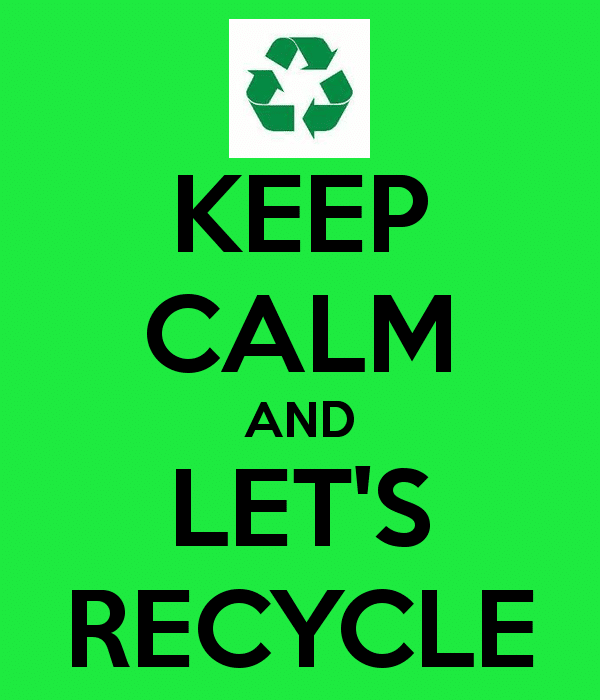
Glass Bottles and Jars
There are so many items made with glass surrounding you, you may not even notice. Glass cookware, windows, mirrors and light bulbs. Glass is made from certain sands that are heated to a scorching 3100 degrees Fahrenheit until it is in a liquid state, at which point it is poured into molds of different shapes and sizes. Sand is the second most-consumed natural resource in the world!
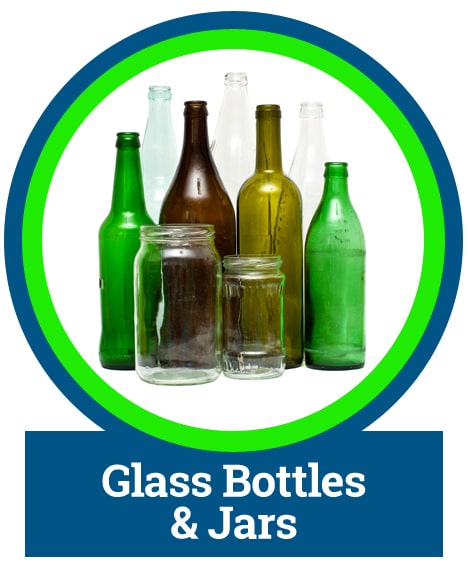
The types of glass that you can recycle in the Blue Bin are bottles and jars. Examples of this include condiment jars for pickles, mayonnaise, syrup, and other food and beverage bottles and jars like those for fruits and vegetables, cooking oils, soda, wine, juice, coffee and more! Once your glass bottles and jars are empty, give them a quick rinse to remove any remaining food, replace the cap and recycle in your Blue Bin!
Sand isn’t used to only make our everyday items like bottles, jars, windows and lightbulbs. Sand is also a huge component in the construction and development industry because it’s used in concrete, asphalt, glass, filler for pipes and retaining walls. You may be thinking to yourself, “But, we have enough sand around the world though, right?” Wrong. We can’t use just any type of sand for our needs, it has to be a particular type of sand that can only be extracted from riverbeds, lakes and shorelines which is extremely damaging to the wildlife and surrounding ecosystems.
Glass is infinitely recyclable which means it can be recycled over and over again without losing much of its chemical makeup. This is one reason it’s so important to recycle your glass bottles and jars. By doing so, you lower our dependence on the sand that is harmfully extracted from our environment.
Metal Food and Beverage Cans
In the United States, most food is packaged in what we commonly refer to as “tin cans” but, coincidentally, they aren’t typically made with tin. Most metal food packaging is made from aluminum, steel or iron and most beverage cans are typically made out of aluminum.
To make aluminum, a chemical called alumina is extracted from a bauxite ore, goes through a chemical mixing process and then becomes aluminum. Bauxite is typically found in tropical or subtropical areas. The countries with the largest bauxite mining industries are Australia, China, Brazil, India and Guinea. There is very little bauxite mining being done in the United States, so we must rely on getting our aluminum from these faraway countries.
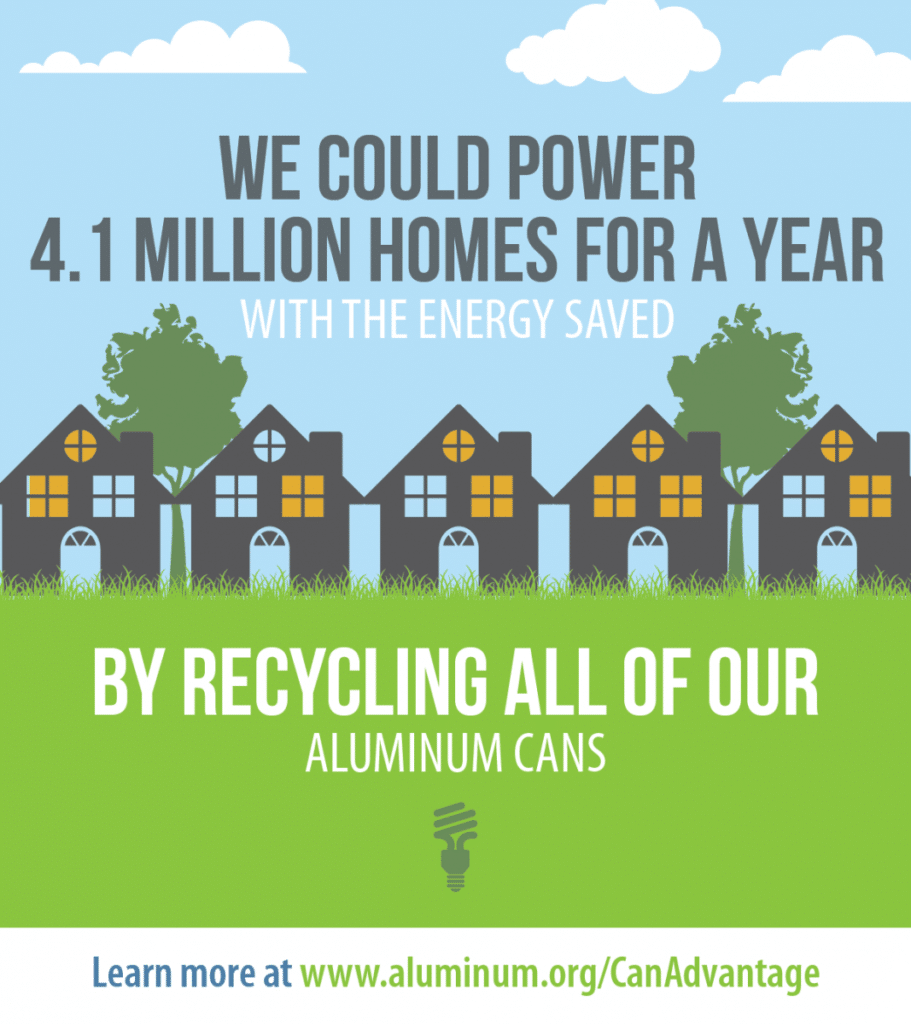
We can reduce our need to import the natural resources to make new aluminum from distant countries by simply recycling our metal food and beverage cans.
Food and Beverage Cartons
Food and beverage cartons that we can recycle in our Blue Bins are cartons that come from the refrigerated or shelf aisle at your local grocery store. They often contain milks, juices, broths, soups and creams. The one “carton” that is not accepted in our Blue Bin is the ice cream carton. The reason for this is because ice cream cartons have a plastic liner on the inside that prevents freezer burn. This liner prevents them from being recyclable.
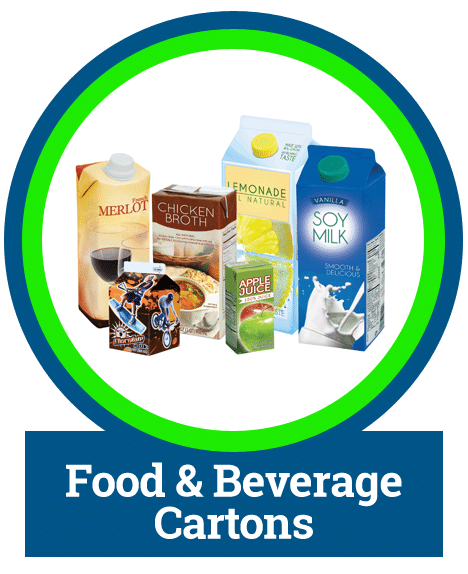
Once your cartons are empty, replace the cap and recycle in your Blue Bin. Recycled food and beverage cartons get made into new paper products like toilet paper, paper towels, facial tissue and office paper.
We are so glad you have taken the time to learn why it’s important to recycle responsibly and which natural resources items come from where. Remember, if you’re wondering whether an item is recyclable or not: if you don’t see it on the list, don’t put it in the bin! You can search our database for places that might reuse or recycle your item, otherwise it belongs in the trash. You can always email us a picture of your item and we can help you recycle responsibly. Email: recycle@stlouis-mo.gov
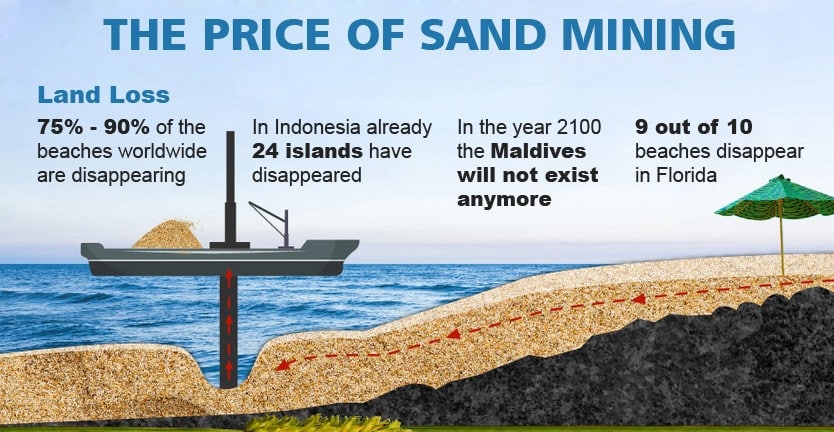





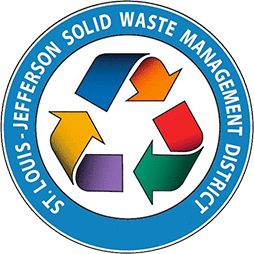



1 Comment
Not only the company I work with but also a lot of big companies these days are required to recycle their byproducts. It’s good to know here that ice cream cartons may not be recyclable since they have a layer of plastic liner. One thing that we should really start re-using is corrugated cardboard since new ones are costly to reproduce.